The year was 2010. Walking down the lanes of the city one day, a young man decides to quit his job and do something on his own. Nothing special. Many do that. But this man does something rather unique. He decides to dabble with honey.
Hillary’s inspiration
The thought of working in this unconventional field came upon Swarnendu Sarkar when he was reading about Sir Edmund Hillary — the first mountaineer to have reached the summit of Mount Everest) who was also a beekeeper — in a library. Influenced by Hillary’s work, Sarkar started to find out more about honey. Since he did not have any professional knowledge on the topic, he started reading journals and books.

Swarnendu Sarkar
Sweet start & Pune boost
In his forties now, Sarkar met a baul from Nadia and started to work with him in 2011. Some other like-minded people also joined in the endeavour and a kind of cooperative was formed. He started collecting honey from beekeepers and started distributing honey to his friends and acquaintances. He also started beekeeping himself in Nadia. “Though everyone praised the honey I gave them, I was somehow not very impressed with its quality. I went in for lab testing and my doubt was confirmed. The amount of moisture was much more than the recommended level. Around this time, the people with whom I had started the endeavour stepped down. I had to incur losses but I decided to take it up more seriously and work on my own. I had already developed a passion for the work. There are places in Kolkata where you are trained on this but the course needs at least 15 to 20 people to start. I started travelling to different parts of the country and attended many seminars and training. In Delhi, during an Indo-European collaborative work, I met a lot of people. That boosted my confidence. I got to know that our thoughts and processes were the same. I went to the Central Bee Research and Training Institute (CBRTI), Pune. Established in 1962, the institute has a library, the biggest in Asia, with books and journals related to bees only. https://www.kvic.gov.in/kvicres/newhm/cbrtintro.html
The institute’s aim is to strengthen apiculture research and training in the Indian beekeeping sector.
Slurp of success
I slowly got connected to a lot of people in the field and, hence, my horizon widened. Initially, I started beekeeping but some medical issues prevented me from doing heavy work. I then started to source honey from different parts of the country. By then, I had started networking with different people in the field, which facilitated my connection to beekeepers. I started to write about honey on my Facebook page since I did not have money for advertisements.
People started following my page, started to use honey and came back to me for more. Though I don’t have any branding of my products, the name of the company is Forage Initiative. From children to the elderly, everyone can consume the products of my company. People started buying my products by word of mouth publicity. The satisfaction that I get after the positive feedback is really gratifying. No bank balance can match it.”
Diverse range
Different parts of our country have different kinds of honey depending on their habitation and vegetation. All of them have their specialities. Sarkar keeps around 30 varieties of them.
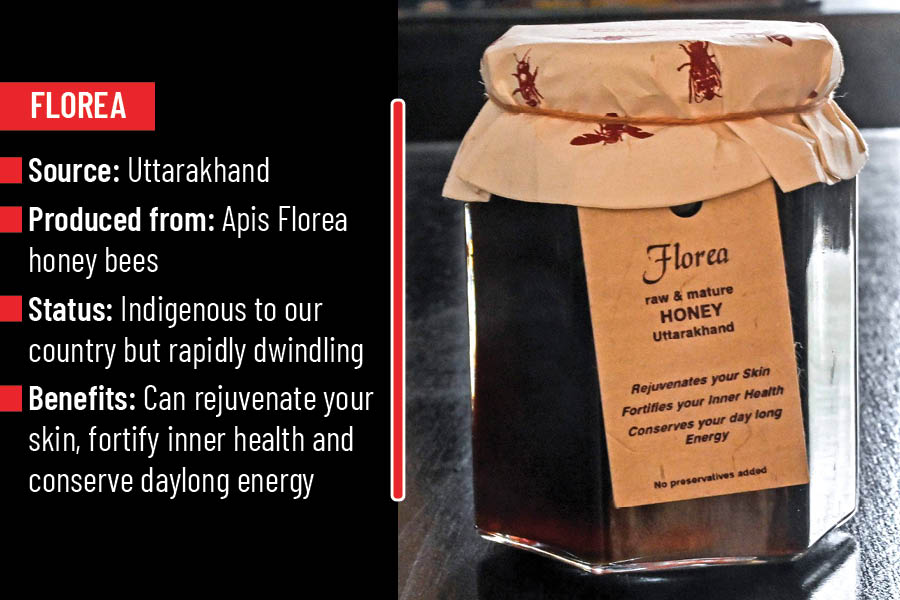
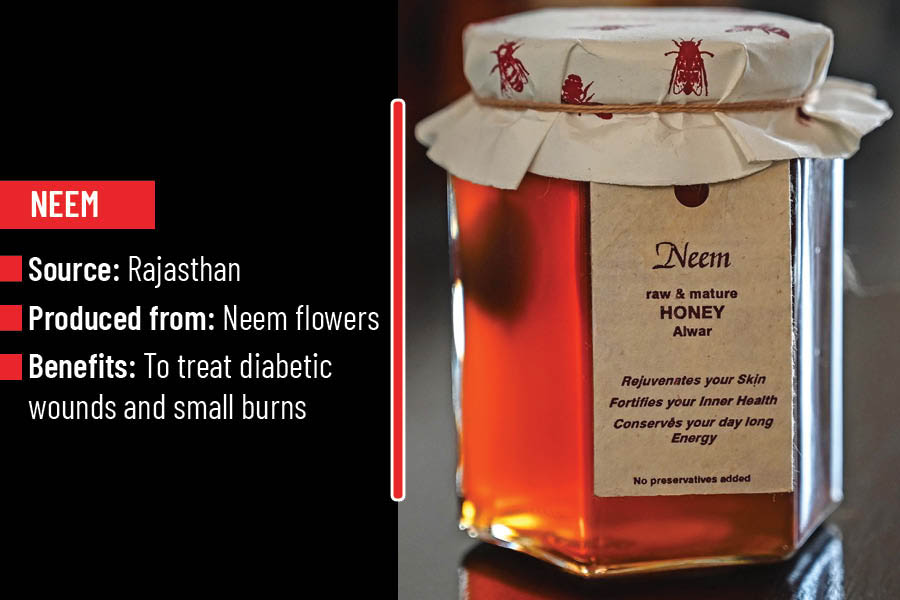

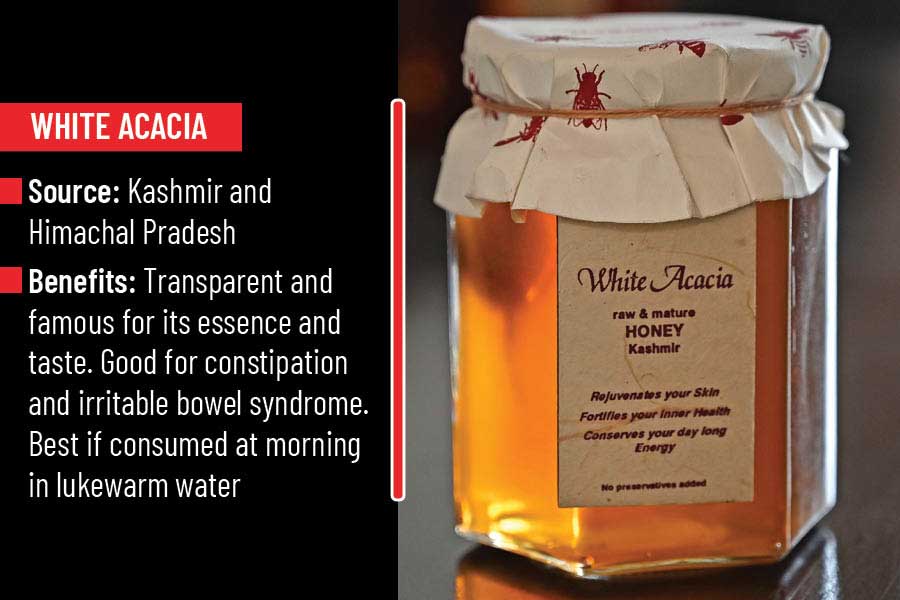
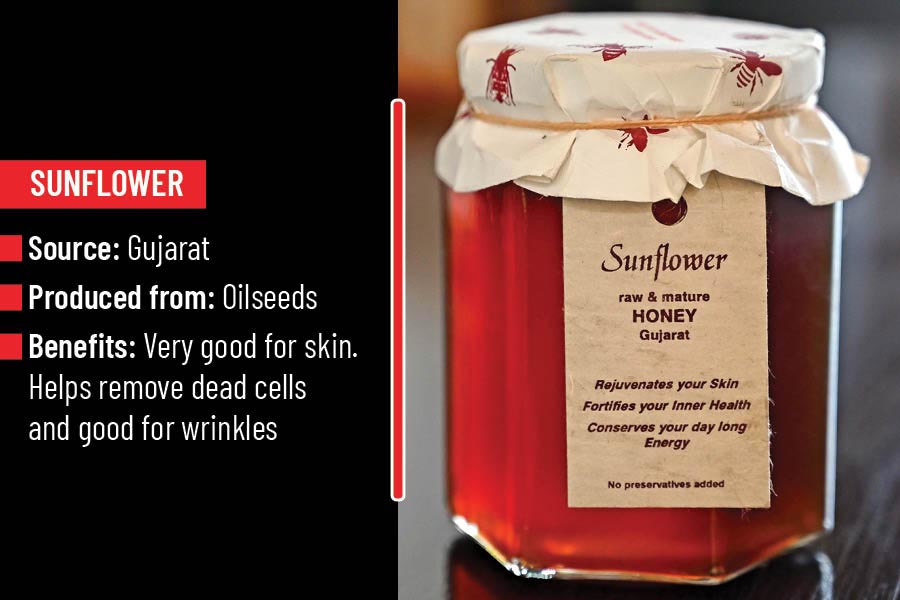
Beekeeping
“I started off as a beekeeper in Nadia. I cultivated bees for honey. For this, migration of bees is necessary. I had boxes that I had to carry from one place to the other to collect pollen and nectar. In December, the fields would be full of mustard and its flowers ripe for collecting pollen and nectar. After this, black cumin is harvested. Then the boxes are migrated to these fields. Hence, whichever crop or spice or flower grows in a particular season, the bees will have to be carried to that field. Not only nectar, pollen is also very important for honey cultivation. The honey that we consume comprises 80 per cent pollen. Pollen is a source of bio protein. The bees collect the pollen and carry it to their hives to feed their smaller ones. They collect honey, too. In their homes, they make a mixture of pollen and honey. It is called bee bread. It is because of the pollen that different honey has different colours and smell,” said Sarkar.
Myths and facts
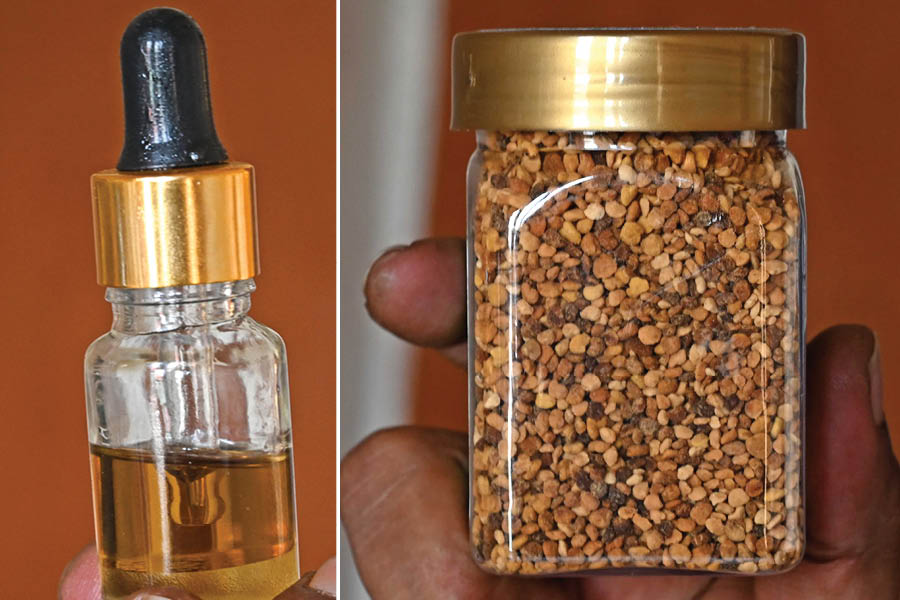
Serum made out of honey and (right) pollens are a high source of bioprotein
“Like every other edible item, honey also has an expiry date. The shelf life of fresh honey is around six months. Thereafter, the honey loses its lustre, the colour and taste also change. It is very difficult to understand the quality of honey. The usual homely tests that are often recommended or checking the velocity of honey by pouring them on cloth or if ants eat honey that is not good honey are all myths. The only way to know the purity of honey is through laboratory tests,” Sarkar said,
A common belief is that honey makes the human body warm. Hence, honey is often consumed as a home remedy for cough and cold in winter. But if honey is not consumed all through the year, then its effectiveness decreases. Honey is a carbohydrate. There is no such element in honey that generates heat. It does have glucose, sucrose, maltose and others and, hence, is high in calories. Any kind of high calorie food, if consumed in excess, creates a lot of energy that produces heat in the body. So is the case with honey, too. Honey should be consumed slowly. It can be mixed with lukewarm water and consumed but best to use it without mixing it with anything. It should be consumed twice a day, once in the morning and once at night, for best results. Honey is not to be heated and consumed because heat breaks up the enzymes and it loses its benefits. If honey is not used regularly, then using it for a short period of time only may only provide temporary relief from cold.

Sarkar in his quaint office at Surya Sen Street in north Kolkata
Myriad uses of honey
Honey can be used on the skin. If you apply honey, leave it for half an hour and rinse off, you can see the difference. Honey is useful for any kinds of dark spots or wrinkles on the skin.
Sarkar has started making some skincare products like serum, face gel, bathing bar, face wash and more. He has even started making beehive products like packs of pollen which is a rich source of bio protein, orange honey marmalade, chyawanprash and others.
Price factor
The price of honey starts at Rs 250 for 350g. Beehive products start from Rs 90, while skincare products start from Rs 150.The honey comes in glass containers with small tags with the name and the region the honey is sourced from.
To place order, you may call at 97320 93298
